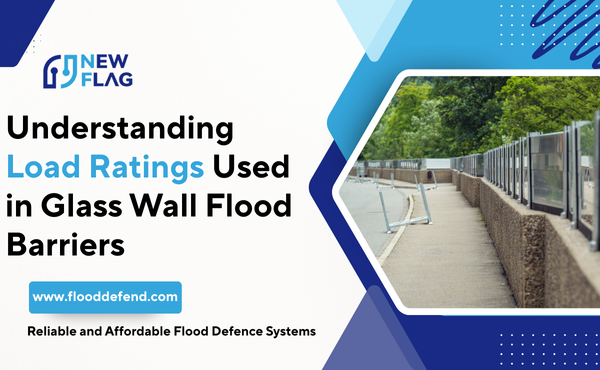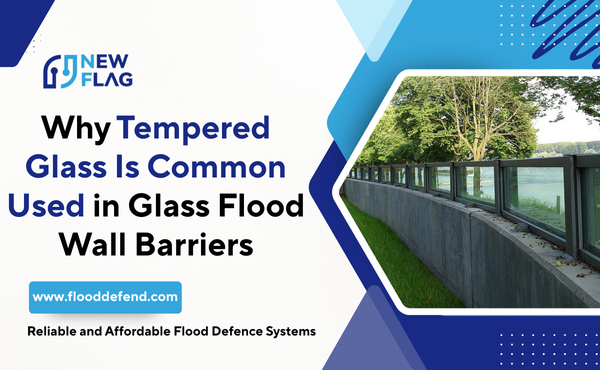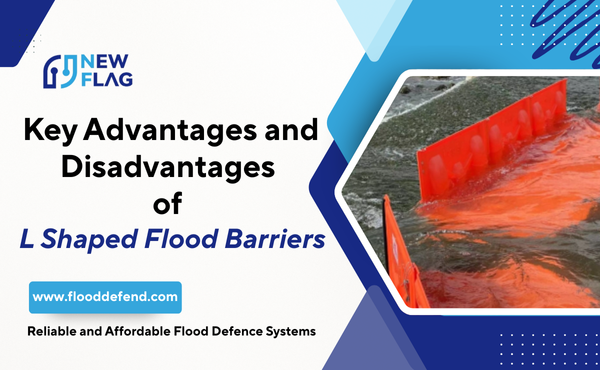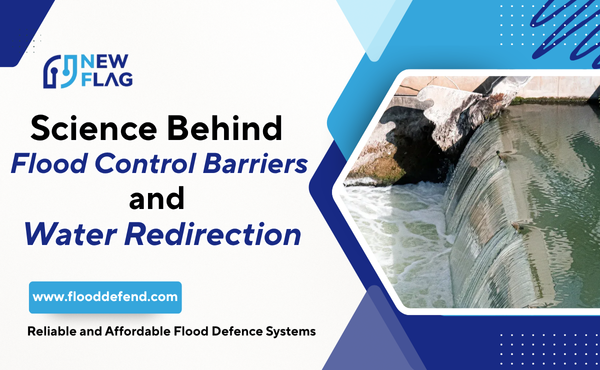Flood protection often conjures images of bulky concrete walls, steel barriers, or bulky levees—structures that, while effective, can feel visually oppressive, block views, and clash with architectural intent. But what if you could have safety and style? Glass wall flood barriers are emerging as a sophisticated solution that blends permanent flood protection with architectural elegance. Let’s explore how they offer that dual promise: beauty and function.
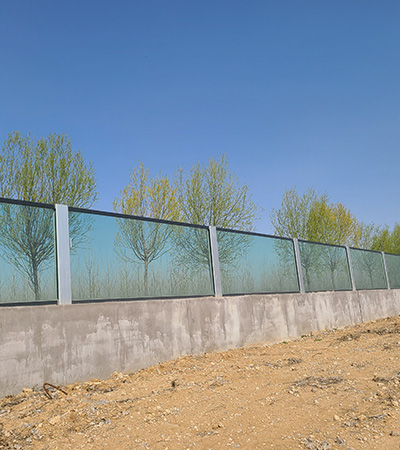
What Is a Glass Wall Flood Barrier?
A Glass Wall Flood Barrier is a permanently installed flood defense system, built using laminated tempered safety glass panels in supportive frames (often aluminum alloy), sealed to foundations with watertight systems. It is fixed (non-demountable), meaning once constructed, it is always in place — no need for deployment when flood alerts come. The NEWFLAG NF-35G is a representative example of this kind of solution. NEWFLAG
Key attributes include:
-
Transparent glass panels of significant strength (multi-layer, PVB interlayers) rather than “plain glass” or single-pane types. NEWFLAG+1
-
Frames/posts usually crafted from corrosion-resistant aluminum alloy, with EPDM seals and sealants at joints to ensure water tightness. NEWFLAG+1
-
Anchoring to foundations (concrete base / embedded plates) to transfer loads properly. NEWFLAG+1
How Glass Wall Barriers Achieve Protection and Preserve Design
Here are the ways these systems manage to be protective without compromising aesthetic, scenery, or user experience.
| Design Principle | How It’s Achieved in Glass Wall Barriers | Why It Matters |
|---|---|---|
| Transparency & Minimal Visual Intrusion | Glass panels let light through, preserve views of landscape, waterfronts, rivers, parks. NEWFLAG’s NF-35G allows spans up to 3 m per panel and heights up to ~1.2 m of visible glass. NEWFLAG+2NEWFLAG+2 | Keeps open, welcoming feel; prevents spaces from feeling walled off; supports landscape and architecture integration. |
| Permanent Installation | Once built, no need to deploy or store parts; always ready. NEWFLAG+2NEWFLAG+2 | Removes risk of human error or delay in emergencies; simplifies lifecycle operations. |
| Sealing & Durability Without Bulk | Laminated safety glass + strong frames + watertight seals ensure protection; thickness around 32-43 mm depending on design, with PVB interlayers. NEWFLAG+2NEWFLAG+2 | Provides structural integrity and safety, but keeps appearance light compared to solid opaque walls. |
| Flexibility & Hybrid Options | The NF-35G system can have added aluminum panels (stop-logs) on top of the glass part to increase height when needed. Also, foundation choices allow freestanding or seated on base. NEWFLAG | Enables adaptation to different flood heights; designer can balance appearance vs required protection. |
| Low Visual Maintenance | The surfaces are glass, which are cleaner to maintain, with seal systems that are robust; only occasional cleaning and inspection needed. Safety glass shatters safely (if ever damaged), with relatively easy replacement of broken panels. NEWFLAG | Ensures over time the barrier doesn’t degrade into an eyesore; keeps public trust and aesthetics. |
Where These Barriers Shine: Best Use Cases
Glass wall flood barriers are especially appropriate in contexts where visual amenity, architectural design, public experience matter. Some examples:
-
Riverfront Walkways, Parks, Promenades – Where people expect views, openness, connection to water. A glass flood wall offers protection without denying the view.
-
Beach Resorts, Waterfront Hotels, Scenic Plazas – The experiential value of views and open design is high; opaque walls would detract significantly.
-
Heritage / Scenic Zones – Historical districts or architecture‐sensitive areas where harsh barriers would disrupt the character or heritage value.
-
Mixed-use Commercial Developments – Retail, dining, recreation spaces along waterfronts need both flood defenses and attractive aesthetics for customers.
-
Public Infrastructure That Must Be Secure & Welcoming – Transit stations, utility facilities, or viewing platforms where safety, security and openness are all valued.
Technical & Material Details That Support Both Aesthetic & Function
Some aspects to check or specify to ensure you get both strong flood defense and preserve design quality:
-
Glass Type & Layering
-
Laminated tempered safety glass, with PVB intermediate layers, to ensure both strength and safety in breakage. NEWFLAG
-
Thickness in range ~32-43 mm (depending on span, height, exposure). NEWFLAG+2NEWFLAG+2
-
-
Frame & Seals
-
Span & Height & Foundation
-
Single spans up to ~3.0 m for panels, heights up to ~1.2 m glass visible. With foundation elevation, can achieve higher flood protection (up to ~2 m effective) in some designs. NEWFLAG
-
Proper anchoring to concrete foundation to transfer loads, especially for static pressure (standing water) and dynamic impacts (waves, debris). NEWFLAG+1
-
-
Safety Features
-
Finish & Color & Accessories
Trade-offs & What “Compromises” May Still Exist
While glass wall flood barriers offer a powerful blend, there are still potential trade-offs that designers/planners/budgeters should understand:
-
Upfront Cost: Higher expense initially than simpler temporary barriers (e.g. boards or sandbags), due to materials (laminated glass, heavy duty frames) and foundation work.
-
Installation Complexity & Logistics: Transporting/moving large glass panels, ensuring flat level base and secure foundation, alignment and precision sealing all take care.
-
Fixed Height of Protection: Unless designed with hybrid or modular options (e.g. adding panels on top), the height of protection is fixed at install. If flood risks rise beyond prediction, you may need retrofits.
-
Visible Maintenance Needs: Glass shows dirt, water spots, algae, etc. If neglected, aesthetics degrade.
-
Potential Breakage: Although safety glass mitigates the harm, there is still the possibility of glass being damaged by debris. Replacement is easier than full wall, but still a consideration.
-
Site Specific Constraints: Irregular ground levels, existing obstructions, curved paths, or heritage constraints may complicate geometry and alignment.
Case Example: NF-35G by NEWFLAG
To illustrate how these trade-offs are navigated, consider NEWFLAG’s NF-35G Glass Wall Flood Barrier:
-
Height & Span: Up to 1.2 m visible glass panel height; spans up to 3.0 m. With proper concrete or base, effective flood barrier height can go higher. NEWFLAG
-
Hybrid Modular Capacity: Ability to add aluminum stop-log panels on top of the glass in more extreme flood situations. So, aesthetic transparency maintained most of the time, with flexibility in extreme cases. NEWFLAG
-
Materials & Safety: Uses triple-layer laminated tempered safety glass with PVB interlayers; posts and frames use corrosion-resistant aluminum and well-designed sealing systems. NEWFLAG+1
Design & Planning Checklist: Ensuring You Capture Both Function & Style
Here’s a checklist you can use (or provide to clients/design teams) to ensure glass flood barriers deliver both protection and aesthetic excellence.
-
Risk Assessment: Flood heights expected, flow rates, debris risks, frequency.
-
Visibility & Views: Where are the sightlines you want preserved? How high should glass be? Where can solid sections be concealed or minimized?
-
Materials Specification: Glass type/layers, frame alloy, finish color, seal types.
-
Foundations & Base Height: Level base, proper anchoring, possibility of adding base so that visible height is kept but protection height is sufficient.
-
Maintenance Plan: Cleaning schedule, panel inspection (seals, glass), spare panel availability, access for repairs.
-
Adaptability: Does the design allow additional height (stop-logs or panels) in future? Is modular extension possible?
-
Aesthetic Integration: Frame color and finish, design details so the barrier complements surroundings (e.g. landscaping, materials nearby), matching across adjacent architectural elements.
-
User & Regulatory Considerations: Local building codes, safety glass certifications, permitting, possible visibility concerns, heritage or planning permissions.
Why Glass Wall Flood Barriers Signal the Future of Urban Flood Defense
Putting together the above, some broader trends make glass wall flood barriers likely to become even more prevalent in urban contexts:
-
Urban planning increasingly values livability, transparency, connection to nature. Flood defenses that are visibly heavy or obstructive no longer align with modern design values.
-
Climate change is raising flood risks, so permanent, always-on defenses are more reliable than temporary ones.
-
Public expectation for design quality in infrastructure is higher: people don’t just want safety—they want beauty, comfort, and experience.
-
Technological/material advances (stronger safety glazing, improved sealing, corrosion-resistant metals, hybrid modular design) are making glass barriers more feasible, durable, and cost-effective.
Conclusion
Glass wall flood barriers represent a compelling design evolution in flood protection: they allow us to maintain and even enhance architectural and landscape aesthetics while delivering serious, reliable protection against flooding. They are a solution for cities, parks, waterfronts, and developments where design matters—not just function.
For architects, planners, property managers wanting both safety and beauty, glass flood walls offer a “best of both worlds” pathway:
-
Transparent views preserved
-
Always-on protection
-
Durable, low-maintenance materials
-
Potential for modularity in extreme events
If you’re considering flood protection in an environment where aesthetics matter—waterfronts, parks, scenic view corridors, heritage zones—glass wall flood barriers should be high on your shortlist.


